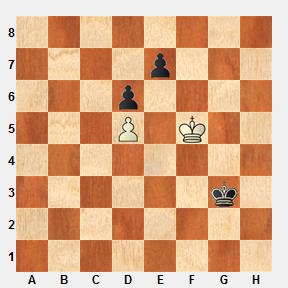I have had a strange sort of day. Summed up, I worked as normal going from school to school teaching chess, until I ended up at an after school class where the classroom that is usually used for chess was unavailable due to parent teacher interviews. So I was directed to another room which was much smaller and with no air con. After an hour in the stifling room I thought I was going to pass out, and was very grateful to get out. I then went to some private group classes at our chess shop and found that I only had to give one class, as my second, more advanced class was being taken by our premier coach IM Robert Jamieson. If you haven't seen Robert in action then you should really check it out. He is consistent, rigorous and has great material both new and old. His lessons challenge students to think, to plan and to produce results in an accurate way. Before leaving I saw the first position he was challenging the kids with and said, "Hey, that's the position I was going to put on my blog tonight!", to which he replied "I thought so".
This position was the culmination of the board 1 game in last night's Melbourne Chess Club (MCC) Championship between Phillip Drew and Guy West. The game had been a hard fought Benko Gambit, where it seemed that the outsider was fully prepared in the opening. IM Guy West got the typical Benko position with queenside counterplay for the pawn, and after exchanges black's position seemed to get better. Eventually an endgame of rook and 4 pawns each was reached where neither side had a passed pawn and the game looked as if it was heading towards a draw.
However, the moral of this game must be that all players would benefit from a study of fundamental or basic endgames. Phillip as white blundered just 2 moves into this position. After 1.Ke4 Kxh4 White is a pawn down and should seek a draw with the opposition move 2.Kf4. However, Phillip played 2.Kf5 which looks plausible but Guy quickly outflanked his opponent with 2..Kg3.
Now white is lost, a tragedy for Phillip. But once again, you have to admire Guy West and his never say die attitude. Guy kept giving his opponent every chance to go wrong. It was a challenging opening, a hard fought middlegame with the main theme being positional compensation for a pawn, and then various transitional possibilities to different endgames. Phillip navigated well through all these difficult phases, but Guy kept on into the purely technical rook ending, and finally the theoretical pawn endgame, and it was in this last stage that his opponent finally blundered!
The result leaves Guy clear at the top with 5/5 before the week break for the Ballarat weekender. Guy is now a point clear of Ari Dale and Dusan Stojic and he has played both these talented young players. A further half point back on 3.5 is a group of 5 players, Chris Wallis, Domagoj Dragicevic, Justin Tan, David Hacche and Malcolm Pyke. Paul Kovacevic continued his good tournament with a draw against higher rated Dizdarevic. But there were a couple of upsets last night. First Finley Dale won against Richard McCart. But probably the biggest upset of the night was Tanya Kolak's victory against Jim Papadinis who is rated nearly 600 points higher!
Endgame knowledge is a big problem for most players, especially in today's ever speedier time controls. More emphasis is placed on tactics and openings than other parts of the game, but anyone who has lost a basic endgame, or been unable to win a clearly won position will know exactly how Phillip is feeling now. The answer is to devote a little of one's chess work on endgames. Karsten Mueller's articles at the chess cafe website are excellent, and some even relevant to a study of basic pawn endgames!


No comments:
Post a Comment